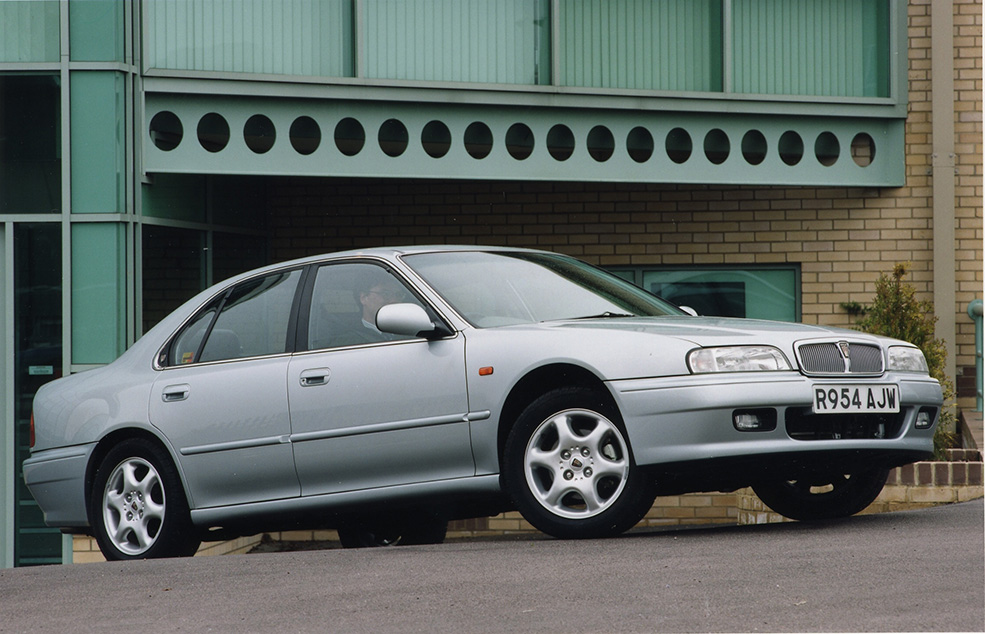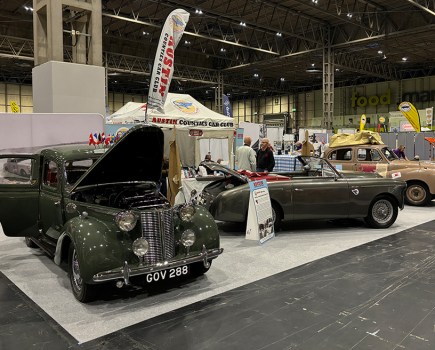It may be 50 years since it was formed but it’s also 30 years since the firm was returned to the private sector for a brief period of success. Paul Wager looks back at the golden age of British Leyland…
Elsewhere in this issue we mark the half-century since the formal incorporation of British Leyland Motor Corporation Limited and doubtless there will be plenty more material on the subject across the motoring press this year.
The year 2018 however, sees another anniversary which is perhaps equally significant: in March it will be 30 years since the company was sold on to British Aerospace by its majority shareholder, the UK government which had seen an opportunity to finally get out of the volume car making business.
The government had taken a majority shareholding back in 1976, since which time the struggling car maker had cost the taxpayer £2.9bn in losses. No wonder then that it was prepared to create serious incentives to ensure the attractiveness of the operation to potential new owners: a cash injection of £800 million was made into the company, while the government was paid only £150 million for its majority shareholding.
Interestingly, during the parliamentary debate following the announcement, Kenneth Clarke (then minister of Trade and Industry) admitted when questioned that no other car maker had expressed interest in acquiring the company. ‘Expressions of interest’ had apparently been received but not a single formal offer.
When pressed in the Commons though, it appeared that although other car makers (popularly though to include Ford) were interested, the government chose to agree to a period of negotiation exclusively with British Aerospace.

On a more positive note, Rover was at that time already committed to the partnership with Honda which had so significantly improved the appeal of its product range and the approval of Honda was crucial to the deal. As was later proved, the Japanese maker wasn’t keen on collaborating with any other European maker and so the choice of an aerospace rather than automotive parent was a prudent one. “We have ascertained that Honda is perfectly content for the acquisition to go ahead. Indeed, it appears to welcome it,” claimed Clarke.
Indeed, as events later proved, the Rover-Honda partnership continued unabated following the takeover and indeed the following year the partnership was cemented with a cross-shareholding between Honda’s UK manufacturing operation and Rover Group.
Of course the announcement in Parliament insisted that British Aerospace viewed the acquisition as a long-term prospect but just in case the new owners were tempted to sell up, restrictions were built into the deal intended to ensure BAE retained control for at least five years. If British Aerospace was to sell Rover Group (including Land Rover) within five years, the first £650 million of any profit would be returned to the government.
As history has proved, British Aerospace left Rover Group with a surprising degree of independence and even allowed the existing management to continue, with Graham Day remaining at the helm.
What it didn’t do was provide substantial investment, popular opinion suggesting that instead of building on Rover’s renaissance with the resources for some fresh new models, BAE management saw the Honda link as cost-effective alternative. This explains why the Rover 600 was so much more Honda and less of a joint-venture than previous models produced by the partnership.
Despite this, the products launched during the firm’s BAE ownership were those which resulted in the period often regarded as a golden age for Rover; the ‘R8’ Rover 200 and 400, the facelifted 800 with its fastback and coupe derivatives and the dull but worthy Rover 600.

While the business of making and selling cars may have gone relatively smoothly following the BAE takeover, and shorn of its historical debts Rover even managed to turn a profit, there was trouble brewing on the political stage.
The European Commission took exception to the government incentives provided as part of the sale, a decision in July 1990 requiring repayment of part of the cash. By August the UK Treasury was forced to demand the repayment of £1.5m by Rover and £42.9m by British Aerospace. BAE and Rover of course appealed but although the original decision was then thrown out on procedural grounds, a further judgement was made against the two companies.
Meanwhile, British Aerospace was beginning to struggle financially and management was wondering how to offload the non-core car making business without the share price being hit by uncertainty. Lucky for them, over in Munich BMW was also wondering how to increase its production volume without diluting the ‘premium’ nature of its products and when an approach was made by BMW chief Bernd Pischetsrieder to Rover boss George Simpson, BAE had its exit route.
Rover’s own management wasn’t quite so thrilled and right until the day before the BMW offer was accepted was trying to persuade Honda to increase its existing holding to full control. Sadly, the Japanese weren’t interested.
The takeover announcement was made on January 31, 1994 and shortly afterwards the Bavarian firm stumped up some £800 million to take control of the entire Rover group.
The rest is relatively recent history, but amidst all the criticism and mockery of the BL era, the short five years when Rover Group was a profitable, attractive company under private sector British ownership is often forgotten.








